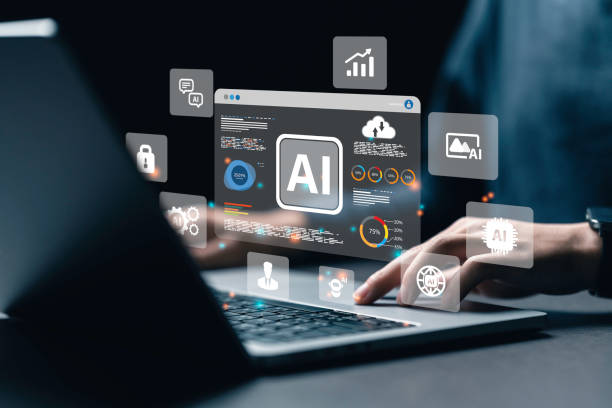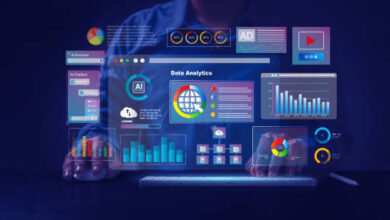Machine Learning for Credit Scoring: Redefining the Future of Lending
Machine Learning for Credit Scoring: Redefining the Future of Lending

In the modern rapidly developing financial world, machine learning (ML) is transforming the credit scoring and lending decision making processes. They are proving to be very accurate. And fast in determining the credit worthiness of both individuals. The corporations by deploying sophisticated algorithms. That are being used by financial institutions. Using big data sets and advanced statistical models. lenders are now able to make quicker. Smarter decisions, more streamlined operations and with greater credit eligibility. The reaching new communities, impacting lives in the process.
Advance of Machine Learning Lending
Machine learning has brought movement on a paradigm of inflexible, conventional practices to adaptive, information-based judgments and decisions that are made through credit scoring. Traditional credit scoring systems are also effective but in many cases they cannot reflect the overall financial profile of a borrower. Instead, ML algorithms will be able to process such amounts of data; insights of different origins cloud based can be processed (which provides a much more detailed and better-informed opinion of the applicant regarding his financial conduct and risks).
High precision and productivity
Advanced analytics and artificial intelligence (AI) have led to unprecedented speeds of loan applications processing and better prediction accuracy by the respective lenders. These models can spot microtrends and correlations in data that may be impossible to pick up a human observer.
The advantages are two-terra:
Lower default rates to lenders because of better identification of risk.
Greater lending access to those customers who might have been effectively locked out using traditional scoring systems.
Responding to a Regenerating Financial System
Adaptation in real time is one of the outstanding advantages of machine learning. However, unlike the static credit models, ML systems constantly learn about emerging information and revise their criteria to capture the changing behavior of the borrower and changing economic atmosphere. This flexibility is very important in the modern rapid market where consumer trends, world events, and financial risks are unpredictable and may alter overnight.
The role of Machine Learning in better scoring credit
The advantages of ML when used in credit scoring is that it can reveal latent associations in information. As opposed to using only traditional financial indicators such as income, credit, and amount of outstanding debt, ML models are capable of considering:
- Alternate financial information
- Activity of social media
Behavioral patterns using the Internet
The lenders are able to get a better comprehension of the reliability of a borrower because of the examination of such a vast variety of data. Also, since ML models are supported by facts and figures (not subjective human impressions), they have the potential to make the lending process less prejudiced, especially against the underrepresented communities and thereby making money more accessible to them.
Machine Learning to Improve Operational efficiency
In addition to being accurate, ML becomes highly efficacious in the operations of lenders.
Automated data processing
They are able to process terabytes of both structured and unstructured data in almost real-time removing the manual review options (and thus dramatically reducing the time it takes to turn the applications around).
Real-Time Decision-Making
Credit scoring with ML can make loans decisions instantly to boost customer satisfaction and enables institutions to handle more volume without necessarily growing resources.
Ongoing Model Enhancement
The ML algorithms learn. They also re-calculate their risk assessment as the new data comes in so there are less manual updates required between them, which is time- and cost-consuming.
To the banks, it implies reduced operation costs, increased processing time and competitive advantage in the contemporary lending market place.
AI-driven Credit Scoring
Machine learning is able to predict better than ever before because it considers hundreds of data indicators, including conventional financial data, and more unusual metrics such as digital interaction trends.
This end to end strategy provides:
- More precise forecasts of the behavior of a borrower.
- Increased equity in credit-decision making.
- Reduce default risk by more accurate risk modeling.
Real-Time Flexibility and Risk Control
Constant learning ability of ML is needed to make sure that credit scoring is up-to-date. These models automatically adapt as new market data becomes available, and can therefore enable lenders to act proactively to keep up with the new conditions.
Technology Partners Role
A credit scoring shift towards machine learning is a matter not only of technology, but a matter of its effective implementation as well. By collaborating with proven technology partners such as Svitla Systems, organizations can get maximum out of ML, as well as stay compliant, scalable, and operationally successful. As a company with experience in AI tools, cloud infrastructure (such as AWS), and enterprise software development, Svitla can offer its services that can assist financial institutions in their smooth move into the next generation of lending.
Conclusion
Machine learning is not just a buzzword, it is transforming the credit scoring arena with its speed, accuracy, flexibility and equity. Whether in automating data processing, providing a decision in real time, or minimizing bias, ML is providing lenders with the resources to serve more people with minimal risk. To financial institutions who are willing to welcome this digital revolution, having a close partner in technology can help in a decent array integration and ROI. By leveraging foresight solutions and engineering skills, such companies as Svitla Systems can assist you in releasing the full potential of machine learning to smarten up, fasten up and be more inclusive in lending.
FAQS
1. Machine learning in credit scoring, what is that?
Machine learning as a credit scoring concept. it involves applying cutting-edge algorithms and data analytics. To measure the creditworthiness of a borrower. in a more accurate way than traditional scoring models do. It has the ability to process large and heterogeneous data. and take into consideration real time responsiveness to changes in financial behavior.
2. Why is machine learning making the decision in lending a better process?
With an examination of both the mainstream and innovative information sources. Machine learning provides a more detailed view of the behavior of the borrowers. This leads to increased due diligence in risk evaluation. Quicker loan authorization and inclusion of the hitherto underserved populations.
3. What kinds of data are available to the machine learning credit scoring models?
Such models have a large volume of data that can be analyzed and such data includes past income, expenditure habits, activity on social sites, list of transactions, and even online activities. This is useful in building a fuller profile of the borrower.
4. Does machine learning help to pare down credit scoring bias?
Yes. Machine learning models have the capacity to reduce human biases since they operate on objective data analysis.
5. What are the leading advantages of machine learning in the case of lenders?
With increases in the speed of the processing, cost savings in operations, better risk forecasting. The greater accuracy in approval. The opportunity of reaching a wider range of customers lenders gain.




